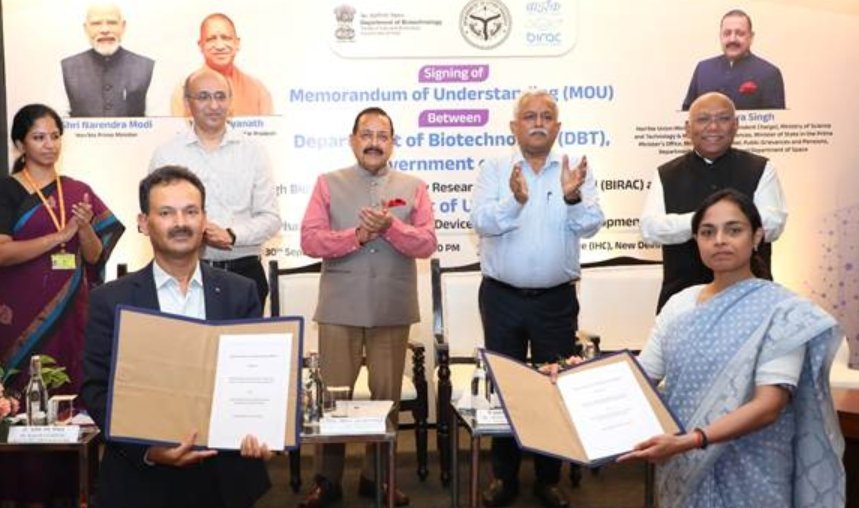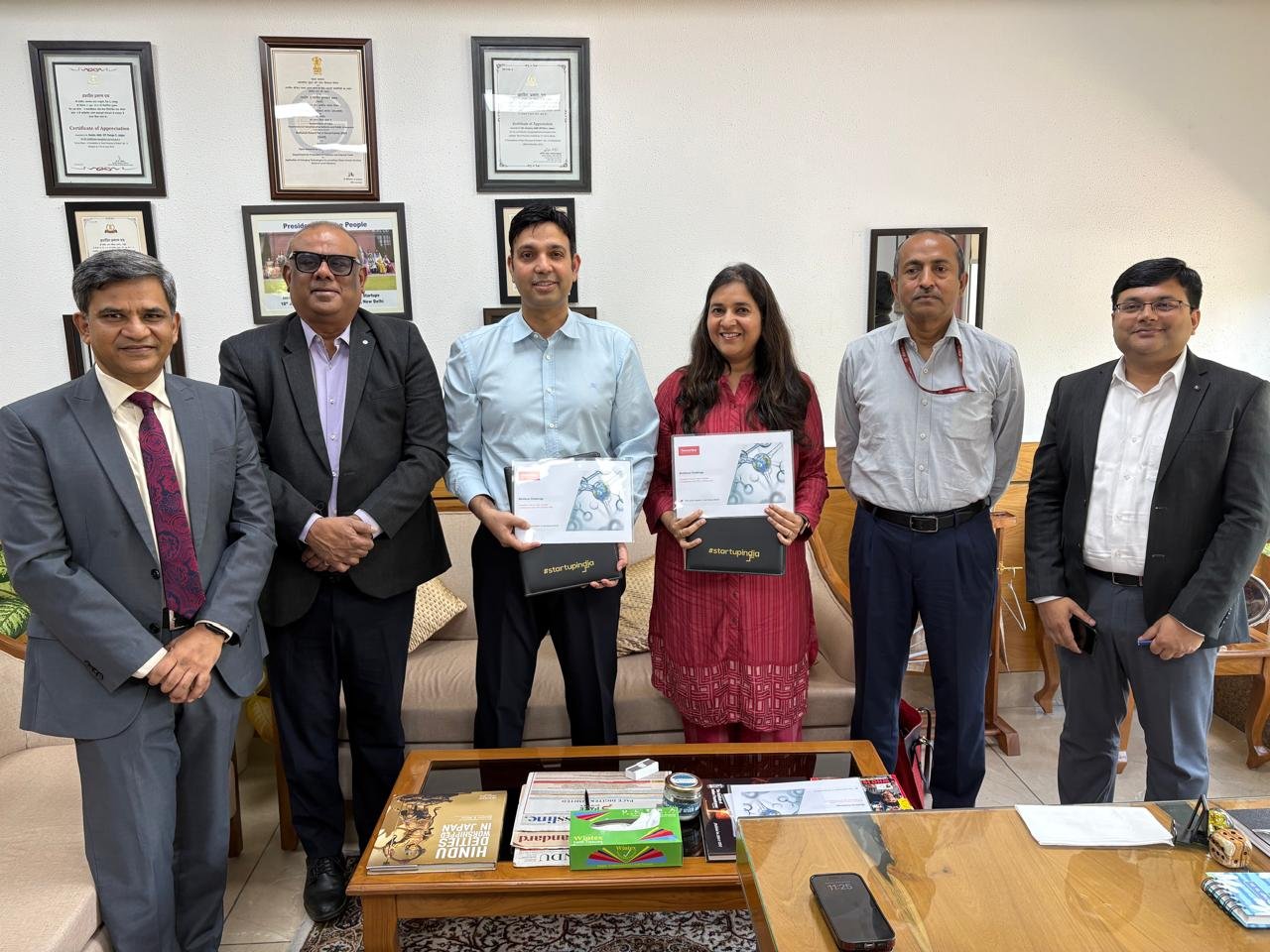From importer to exporter
April 10, 2012 | Tuesday | News
With over 300 varieties of seeds to choose from, excess produce of
Bt cotton has transformed India into an exporter of cotton
India accounts for about 32 percent of the global cotton cultivation area and contributes 21 percent to the global cotton produce, second highest after China. Cotton production in India also has a wide impact on the livelihood of the farmers and on the economy of the country, apart from international trade. It provides employment to around 42 million people directly or indirectly.

Globally, India ranks first in terms of cultivated area followed by China, the US and Pakistan. India more than doubled its production from 13.6 million bales in 2002 to 35.5 million bales in 2011. Over the past few years, India has even managed to produce at least six-to-nine million bales more than is required for domestic consumption.
From a meager 308 kg per hectare in 2001-02, the average yield of cotton increased to 526 kg per hectare in 2008-09 and stayed above 500 kg per hectare in 2010-11 as well. Statistics show that the leap has much to do with the increasing popularity of Bt cotton in the 10 cotton-growing states of the country.
This boom in cotton production has also transformed India from being an importer of cotton to a net exporter of the same. Exports have seen a tremendous rise from a mere 0.05 million bales in 2001-02 to 8.8 million bales in 2007-08.
2009: A landmark year
In 2009, there were three notable developments in Bt cotton. First, the trend of adopting multiple gene (mostly two genes) Bt cotton, over single gene products, caught up in India. The first two-gene event MON15985 (Bollgard II) was developed by Mahyco and featured the two genes cry1Ac and cry2Ab sourced from Monsanto. That year, multiple gene Bt cotton occupied more hectares (57 percent) than single gene Bt cotton (43 percent). This was because multiple gene hybrids provide additional protection against Spodoptera (a leaf-eating caterpillar) and American bollworm, Pink bollworm and spotted bollworm. It has also been reported that multiple gene Bt cotton farmers earn higher profits through cost savings associated with fewer sprays of insecticides.
The year 2009 also saw the first indigenous public sector Bt cotton, Bikaneri Nerma. Third was the approval to commercialize a new Bt cotton event that featured a synthetic cry1c gene developed by Metahelix Life Sciences. Last season, this second-generation Bt cotton seed was cultivated on 72 percent of the land under cotton cultivation, which is an increase by 371 percent in the last three years.
A multipurpose crop
An important but unrecognized fact about cotton is that, in India, roughly 67 percent of the cotton produced is used for animal feed, whereas the remaining 33 percent is used as fiber in the textile industry. It is cultivated in about 10 million hectares in the country. The main products of cotton plant are cotton lint and cotton seeds. Cotton lint is the fibre of the plant that is used in the textile industry. Cotton seeds yield three important by-products: linters, hulls and kernels. Linters are short fibres that are still attached to seeds after ginning. They are used for manufacturing products such as propellants used for gun ammunition. Hull of the cotton seed is used as animal feed. Oil extracted from the kernel is either used directly or is mixed with other edible oils for human consumption.
Cotton is the only oilseed crop that has shown tremendous progress after the introduction of Bt cotton hybrids in 2002. The production of cotton oil registered a three-fold increase from 0.46 million ton in 2002-03 to 1.20 million ton in 2010-11. In 2009-10, cotton oil contributed about 13.7 percent of the total edible oil production in the country.
The way forward
The history of Bt cotton in India is a unique example of rapid technology acceptance. It even prompted Home Minister Mr P Chidambaram to urge scientists to replicate the success of Bt cotton in cereals and food crops. However, there is a need for good public awareness programs, a well-regulated seed distribution system and conducive market condition for the produce.
Equally important is the cooperation among seed developers in public and private sectors, extension workers and scientific officers of companies in disseminating factual and reliable information about Bt products and their performance.
| Break-up of cotton by-products |
| Item |
2002-03 |
2009-10 |
2010-11 |
| Cotton production (million bales) |
13.6 |
29.5 |
32.5 |
| Cottonseed production@310kg/bale (million tons) |
4.21 |
9.15 |
10.07 |
| Retained for sowing & direct consumption (million tons) |
0.50 |
0.50 |
0.50 |
| Marketable surplus (million tons) |
3.71 |
8.65 |
9.57 |
| Production of washed cottonseed oil (12.5% (million tons) |
0.46 |
1.08 |
1.20 |
| *very few farmers retain cotton seed for sowing over the last nine years, as cotton hybrid seed planting increased to 90% of cotton area. Cotton hybrid seeds production is undertaken seperately by specialized cotton growers and marketed by private seed sector in the country. |
| Source: compiled by ISAAA, 2010; COOIT, 2010; AICOSCA, 2010) |
Vipul Murarka
in Bangalore


 Globally, India ranks first in terms of cultivated area followed by China, the US and Pakistan. India more than doubled its production from 13.6 million bales in 2002 to 35.5 million bales in 2011. Over the past few years, India has even managed to produce at least six-to-nine million bales more than is required for domestic consumption.
Globally, India ranks first in terms of cultivated area followed by China, the US and Pakistan. India more than doubled its production from 13.6 million bales in 2002 to 35.5 million bales in 2011. Over the past few years, India has even managed to produce at least six-to-nine million bales more than is required for domestic consumption.







